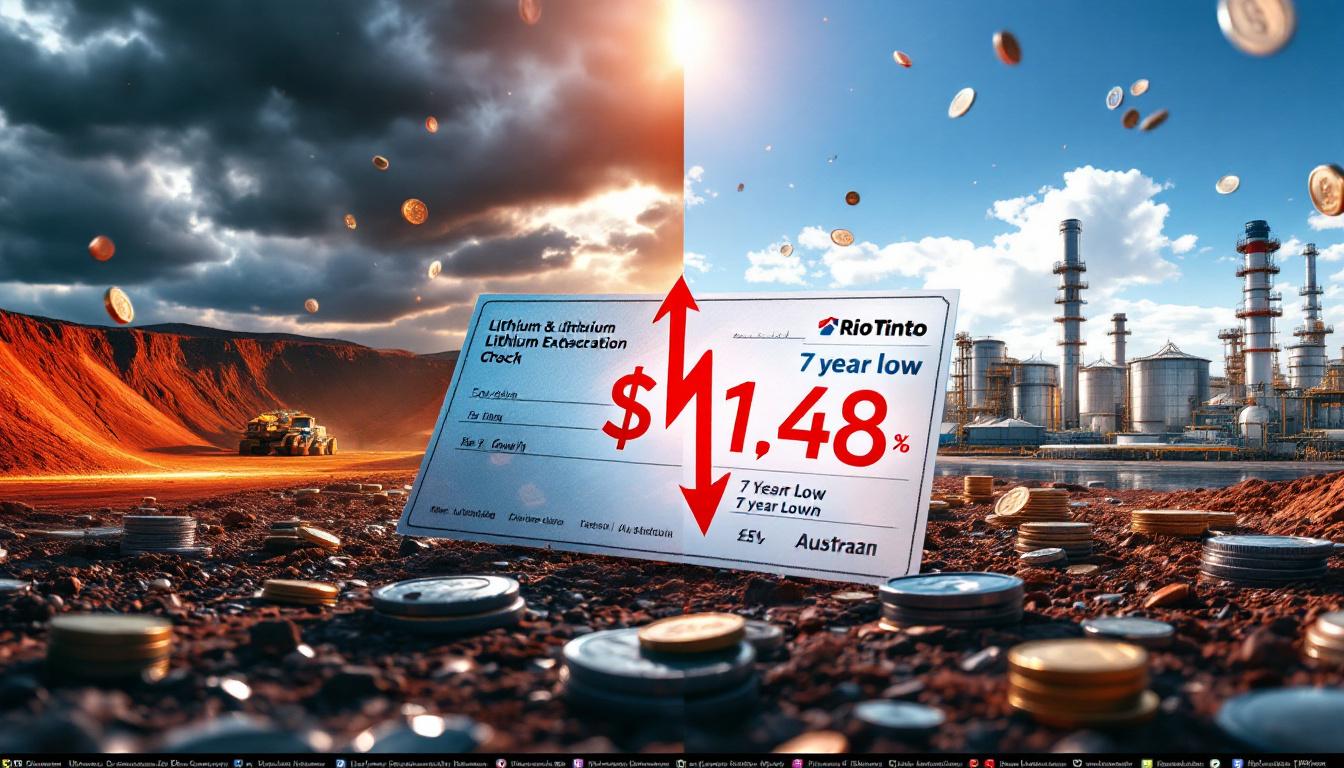What Are the Current Crude Oil Price Trends?
The global crude oil market has experienced significant volatility recently, with key benchmarks showing mixed signals that have analysts and investors carefully monitoring price movements. Crude oil prices today continue to drive global market attention.
WTI Crude is currently trading at $63.07 per barrel, having gained 0.72 points (1.15%), while Brent Crude sits at $65.48, reflecting an increase of 2.66 points (4.23%). Similarly, Murban Crude has risen to $66.61, up 2.68 points (4.19%).
This recent recovery follows a concerning period when Brent briefly dipped below the psychological threshold of $60 per barrel. The rebound—over 3% in just days—came primarily after former President Trump's energy policies decision to pause reciprocal tariffs for 90 days for most countries.
In addition, with the exception of China—reflecting China's stimulus impact—this move helped restore confidence.
Other significant price indicators present a complex picture in the energy landscape. The OPEC Basket currently stands at $66.54 (+0.29, +0.44%). Meanwhile, Louisiana Light has declined to $62.34 (-1.06, -1.67%).
Mars US crude trades at a premium of $72.90 (-1.12, -1.51%), and downstream products vary, with gasoline at $2.046 (+0.008, +0.39%) and natural gas at $3.733 (-0.083, -2.18%).
Latest Price Movements
The crude oil market’s recent price movements reflect a delicate balance between supply concerns and demand uncertainties. After Brent’s sub-$60 crisis that sent shockwaves through producing nations, the market has found temporary footing.
According to industry analysts, this stabilization remains fragile and is highly dependent on geopolitical developments and upcoming OPEC+ decisions.
An energy strategist stated, "We're witnessing unprecedented volatility. The market is responding not just to fundamentals but to a complex web of political signals and production strategies."
This observation aligns with market dynamics explained, providing clarity on the recent turbulence.
Key Price Indicators
Beyond headline benchmarks, regional variations tell an important story about global oil dynamics. Middle Eastern blends, for instance, show particular weakness across various grades.
Iran Heavy stands at $59.86 (-3.13, -4.97%), Basra Light at $71.69 (-3.60, -4.78%), and Saharan Blend at $61.58 (-3.35, -5.16%).
These figures highlight the impact of OPEC+ production increases and shifting Asian demand patterns.
North American blends reflect similar downward pressure. The Canadian Crude Index is at $53.57 (-1.23, -2.24%), Western Canadian Select at $47.23 (-1.12, -2.32%), and Eagle Ford at $56.06 (-1.12, -1.96%).
Such trends pose challenges for Canadian producers facing higher extraction costs in oil sands operations.
Why Are Oil Prices Fluctuating Today?
Price volatility stems from a perfect storm of geopolitical tensions, production policy shifts, and global economic uncertainty. Today's crude oil prices today are influenced by this intricate mix, making forecasting exceptionally challenging.
Furthermore, the confluence of these factors has created one of the most difficult environments for market prediction in recent times.
Geopolitical Factors
U.S.-China tariff tensions have emerged as a major driver of market instability. The decision by the Trump administration to partially pause tariffs was pivotal.
Exempting China from this pause illustrates the nuance behind geopolitical market strategies.
Meanwhile, Venezuela’s military alert over an alleged ExxonMobil plot adds uncertainty to Latin American production.
Middle Eastern tensions further compound these issues. Premiums on Saudi and UAE grades remain due to ongoing regional risks.
Security analysts believe these geopolitical premiums will extend into 2025 as critical production regions continue to experience unresolved conflicts.
OPEC+ Production Decisions
OPEC+ recently announced plans to accelerate output increases by 411,000 barrels per day (bpd) in May. This surprise move contributed significantly to recent price declines.
The acceleration, equivalent to three monthly increments, signals a shift in strategy—particularly from Saudi Arabia.
The Kingdom has cut official selling prices ahead of the planned boost, a move interpreted as both a market share strategy and a disciplinary measure against non-compliant members.
For instance, Kazakhstan, Russia, and Iraq have historically exceeded production quotas, with Kazakhstan’s February production reaching 2.12 million bpd compared to a quota of 1.468 million bpd.
Economic Indicators
JPMorgan recently raised its recession probability to 60% (up from 40%), citing tariff-related uncertainties. This rise has amplified concerns about demand destruction in energy markets.
Market anxiety is evident in cancelled IPOs and corporate restructurings amid current volatility. For example, the fear of oversupply could create a price trough that challenges producer economics worldwide.
How Do Different Oil Benchmarks Compare?
Understanding the relationship between various oil benchmarks offers critical insights into regional market dynamics.
The international market comprises several key reference prices, each reflecting differing regional characteristics.
Global Benchmark Comparison
Brent Crude, the most widely used global benchmark, currently trades at $65.48 per barrel. In contrast, WTI (West Texas Intermediate), the U.S. standard, sits lower at $63.07 due to transportation and quality differences.
Additionally, Murban Crude has become a prominent Asian benchmark, currently trading at $66.61. The OPEC Basket offers a weighted average at $66.54, while Louisiana Light is at $62.34.
These differentials reflect not only numerical variations but also factors such as crude quality, transportation costs, and regional supply-demand imbalances.
For further details on these trends, readers may explore commodities market insights.
Regional Oil Price Variations
Middle Eastern grades display significant diversity due to their chemical compositions and export markets.
For instance, Iran Heavy trades at $59.86, largely due to quality issues and sanctions, while Iraq’s Basra Light commands a premium at $71.69 despite a recent decline.
In North America, the Canadian Crude Index and Western Canadian Select trade at discounted levels compared to WTI, largely because of transportation constraints and sourer crude characteristics.
A Calgary-based energy analyst noted, "The width of the WCS-WTI spread remains the single most important factor for Canadian energy sector profitability."
This remark is especially pertinent given how many producers are barely covering operating costs due to current market conditions.
What Are Analysts Saying About Oil Prices?
Analyst opinions on crude oil price trajectories remain deeply divided. Today’s crude oil prices today reflect both bullish and bearish views, with influential investment banks offering starkly contrasting outlooks.
Expert Forecasts and Analysis
Standard Chartered advises market participants not to panic despite ongoing OPEC+ increases. Their medium-term outlook remains bullish despite current sentiment-driven weakness.
Conversely, Goldman Sachs has downgraded its 2026 oil price forecast to below $60, citing structural headwinds such as efficiency gains and the rise of alternative energy.
Citi’s short-term forecast of $60 for Brent aligns with those cautioning that near-term oversupply might persist.
JPMorgan warns that a full-blown recession could reduce oil demand by as much as 1.5-2 million bpd.
This warning reinforces the idea that structural shifts may stretch the period of market recovery and adjustment.
Market Sentiment
Industry sentiment is notably cautious amid accelerating production increases by OPEC+.
U.S. shale producers, in particular, have warned that current price levels are unsustainable for continued investment. A prominent shale executive remarked, "The industry needs to stop drilling right away."
Such views underline the fragile balance between supply and demand as revealed by this market dynamics explained.
Furthermore, Canadian oil producers are shifting focus to debt reduction amidst declining prices.
For further information on market trends, one might consult oil market news, which frequently updates on these dynamic shifts.
How Are Production Changes Affecting the Market?
Production strategies by both OPEC+ and non-OPEC producers send conflicting signals about future supply growth.
These contradictions have added another layer of volatility to global oil prices. Analysts remain divided on whether structural changes will stabilise the market in the long term.
OPEC+ Strategy
OPEC+ is now phasing out voluntary production cuts. This shift is largely a response to non-compliant members such as Kazakhstan and Iraq.
The decision to boost production by 411,000 bpd demonstrates a move away from previous cautious strategies.
Saudi Arabia’s stance—using production increases as leverage against “freeloaders”—signals a broader disciplinary mechanism. An OPEC+ analyst commented, "Either everyone adheres to their commitments, or the cooperation framework loses its meaning."
Such measures appear aimed at restoring order and discipline, even as they introduce short-term supply excess.
Non-OPEC Production Trends
U.S. shale growth shows signs of a structural slowdown. Production figures have fallen from 1.605 million bpd in 2023 to a forecasted 734,000 bpd in 2024.
Estimates for 2025 and 2026 project further declines to 367,000 bpd and 151,000 bpd respectively.
Other regions, such as Brazil and Canada, continue to expand production, yet overall non-OPEC supply growth is expected to remain below 1 million bpd.
This contrast raises questions about long-term equilibrium amid persistent economic uncertainties.
What's Happening with Global Oil Infrastructure?
Developments in oil infrastructure significantly affect market accessibility and pricing dynamics.
Recent events have underscored the vulnerability and importance of maintaining robust physical supply lines.
Pipeline and Export Developments
The Keystone crude oil pipeline recently faced operational challenges after a leak forced a temporary shutdown, affecting flows from Canada to U.S. refineries.
Such disruptions highlight the risks associated with ageing infrastructure. Meanwhile, Russia’s CPC oil export capacity remains intact following a favourable court ruling.
This decision safeguards export routes vital for Caspian producers.
Iraq is also seeking to restore Kurdistan’s oil exports, which could eventually reintroduce approximately 400,000 bpd to global markets.
Furthermore, Libya has announced its first oil bid round in 18 years, potentially attracting international investment to modernise its ageing infrastructure.
Storage and Inventory Levels
U.S. commercial crude oil inventories have been declining even as prices remain weak.
This counterintuitive development suggests that physical markets may be tighter than futures imply.
Concurrently, U.S. gasoline and distillate inventories are also falling, pointing to robust downstream demand.
Analysts note that strategic reserves—if tapped through further purchases—could provide a potential price floor.
How Are Oil Companies Responding to Market Conditions?
Corporate strategies are evolving fast as companies navigate uncertain market conditions.
Different approaches are evident among national oil companies, international majors, and independent producers.
Corporate Strategies
American refiners are currently refraining from large capital investments, preferring to prioritise shareholder returns over major expansion.
Such caution reflects concerns about long-term demand and potential regulatory changes.
Contrastingly, Saudi Aramco has announced 14 new discoveries despite declining oil prices.
This counter-cyclical strategy leverages its low-cost position to build reserves while competitors retrench.
Chevron is implementing innovative "triple-frac" technology in half of its Permian wells.
This approach has boosted productivity by up to 30% and reduced operational costs.
The industry's mixed signals reflect a broader debate over continued investment under current price conditions.
Investment Patterns
Corporate governance challenges are also influencing market responses. For example, BP’s chair recently stepped down amid pressure from activist investor Elliott Management.
Similarly, Phillips 66 finds itself in a strategic tug-of-war with activists.
Meanwhile, capital expenditure has shifted towards low-risk projects.
Private equity firm Stonepeak’s $5.7 billion investment in natural gas infrastructure indicates selective confidence in certain midstream assets.
What Are the Long-Term Outlook and Future Price Predictions?
Beyond current volatility, the oil market confronts structural issues regarding long-term equilibrium.
Today’s crude oil prices today serve as a reminder of the deep uncertainties gripping the industry.
Market Fundamentals
Standard Chartered remains bullish on oil market fundamentals despite short-term volatility.
They argue that current prices fail to capture the impending tightening of supply-demand balances.
Furthermore, improvements in OPEC+ discipline might eventually remove excess capacity from the market.
Analysts note that a recession could further reduce demand by up to 2 million bpd, overwhelming supply adjustments.
Such risks pose significant long-term challenges, although moderate non-OPEC supply growth might suffice under stable conditions.
Price Forecasts
Forecasts for future oil prices vary notably among experts.
Goldman Sachs predicts Brent below $60 in 2026, while Standard Chartered expects tighter market conditions will support higher prices.
Citi’s short-term forecast of $60 for Brent concurs with a broader caution on near-term fundamentals.
For those tracking these projections, it is useful to consult energy market updates that provide detailed analysis and real-time insights.
FAQ: Common Questions About Oil Prices
What Caused the Recent Drop in Oil Prices?
Multiple factors contributed to the recent decline.
• Geopolitical tensions and tariff policies were major influences.
• Sudden increases in OPEC+ output added to the supply glut.
• Economic uncertainty and recession fears further pressured prices.
• Infrastructure disruptions, such as pipeline leaks, also played a role.
How Do Regional Differences Impact Benchmarks?
Regional differences in quality, transport costs, and supply-demand dynamics create price discrepancies.
For example, Middle Eastern and North American crudes differ significantly, affecting regional benchmarks.
Will Current Production Changes Stabilise Prices?
Analysts are divided on this matter.
Some believe that the enforced discipline on OPEC+ members will eventually balance the market.
Others worry that non-OPEC production and external shocks might prolong volatility.
Today’s crude oil prices today underline the importance of understanding both short-term dynamics and long-term fundamentals.
As the market adjusts to ongoing changes, investors and industry stakeholders remain closely vigilant, using data, analysis, and updated reporting from sources like oil market news and energy market updates.
Want to Capitalise on the Next Major Mineral Discovery?
Discovery Alert's proprietary Discovery IQ model instantly identifies significant ASX mineral discoveries, delivering real-time alerts before the broader market catches on. Explore how historic mineral discoveries have generated substantial returns by visiting the Discovery Alert discoveries page and position yourself ahead of the market today.




